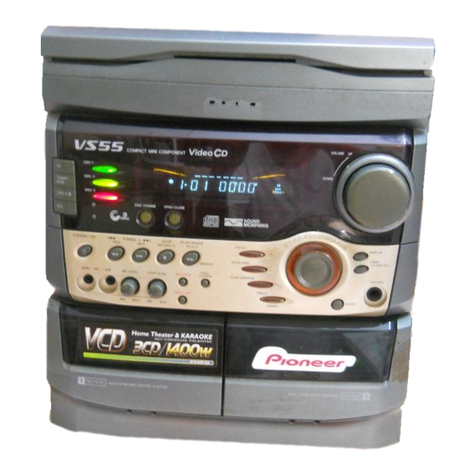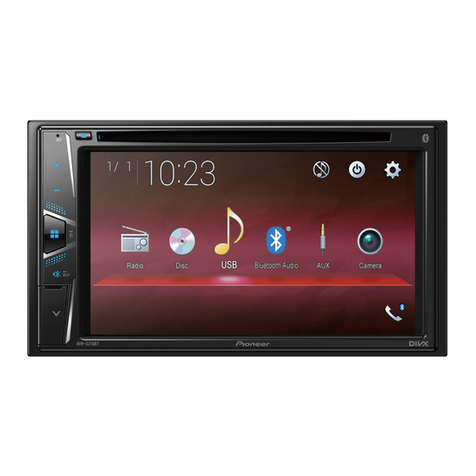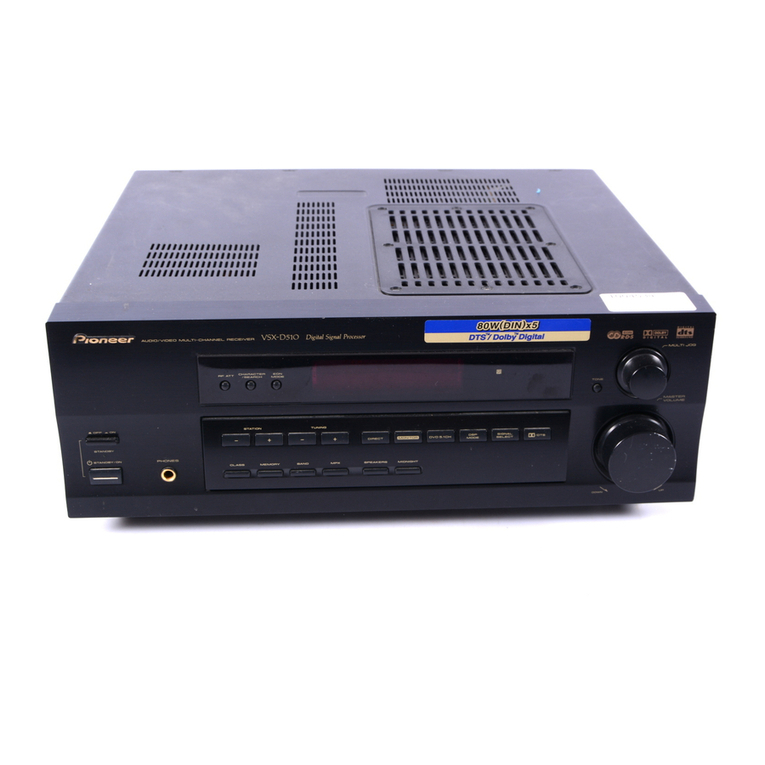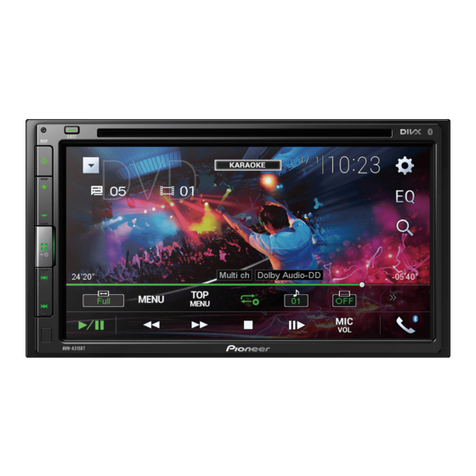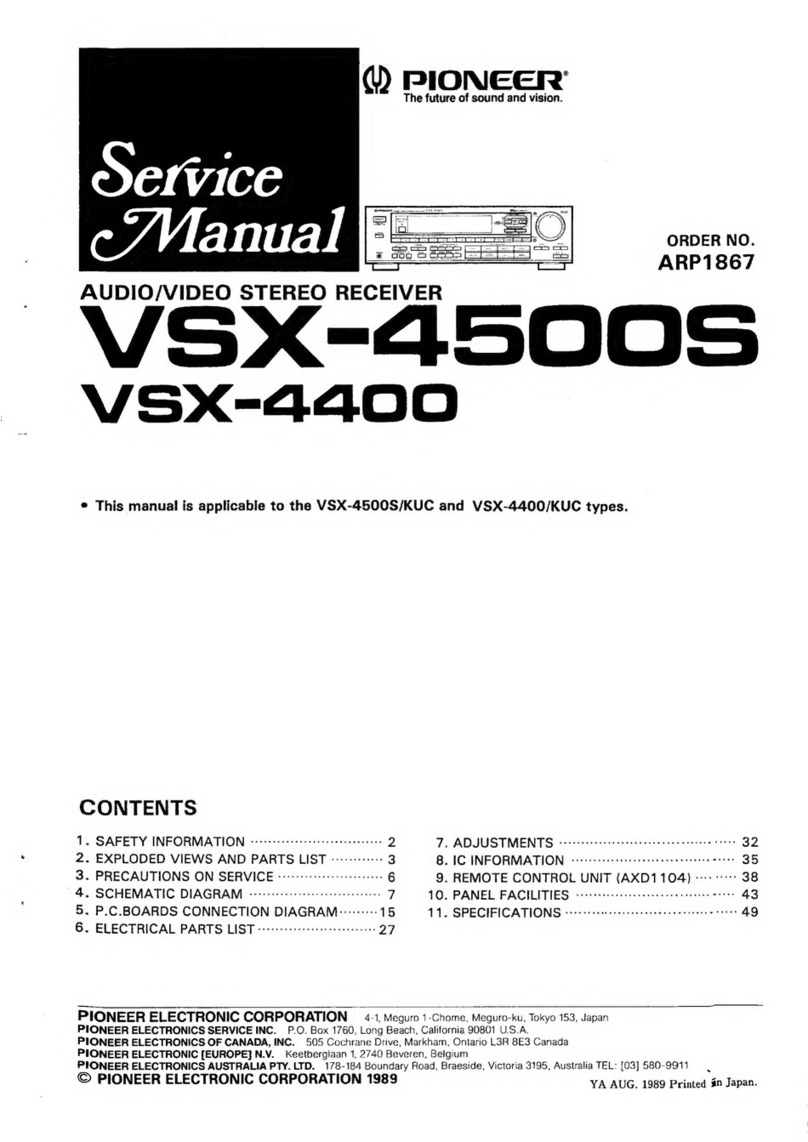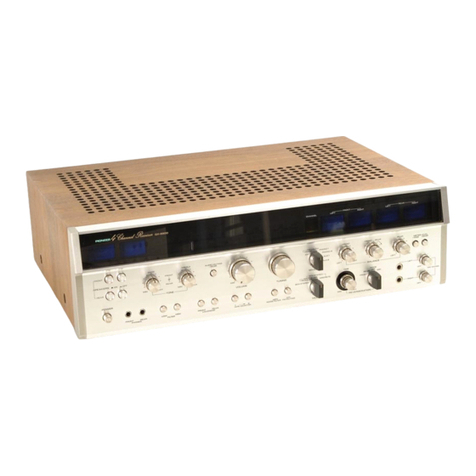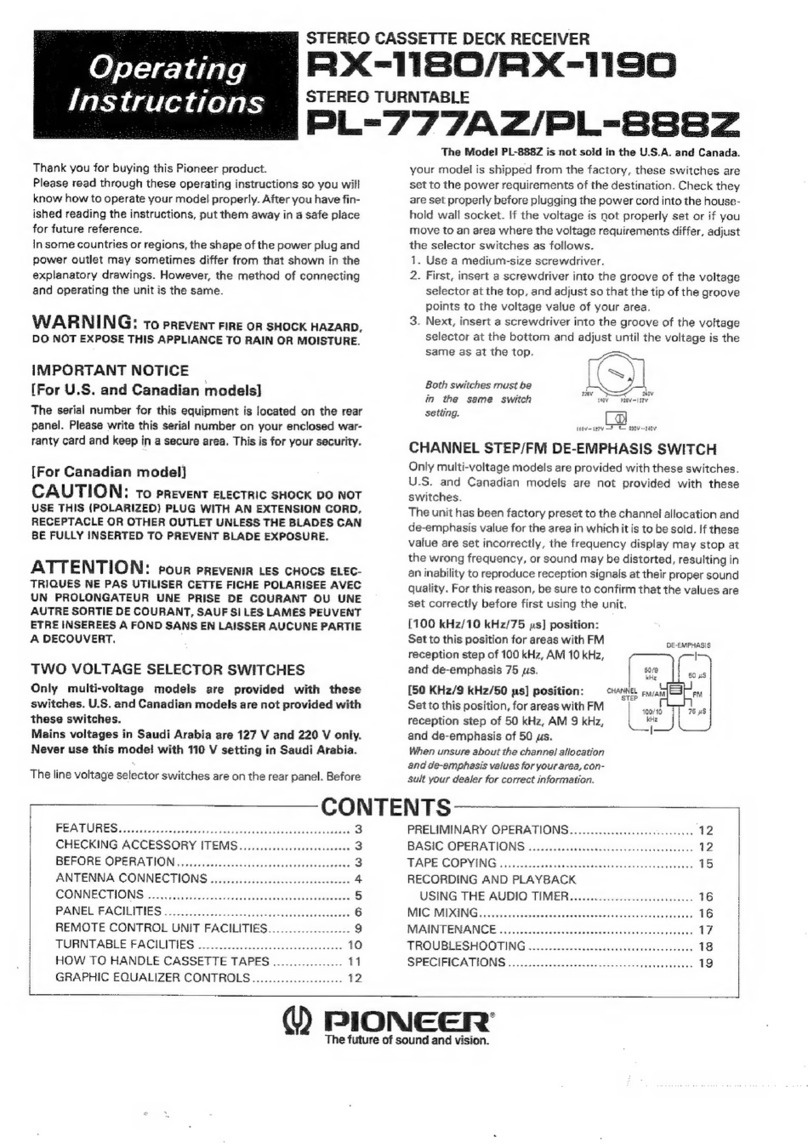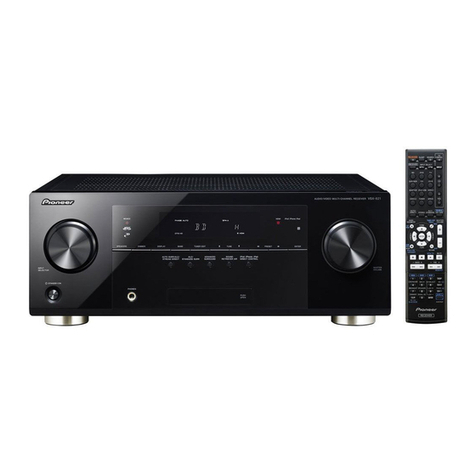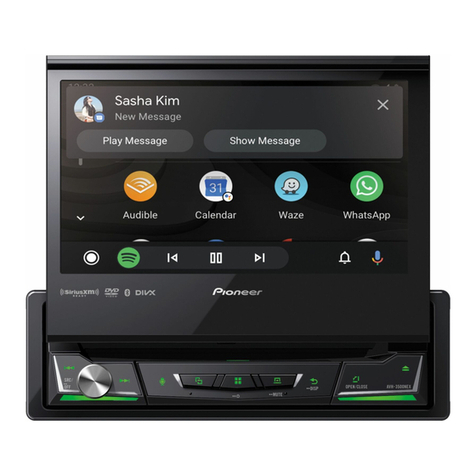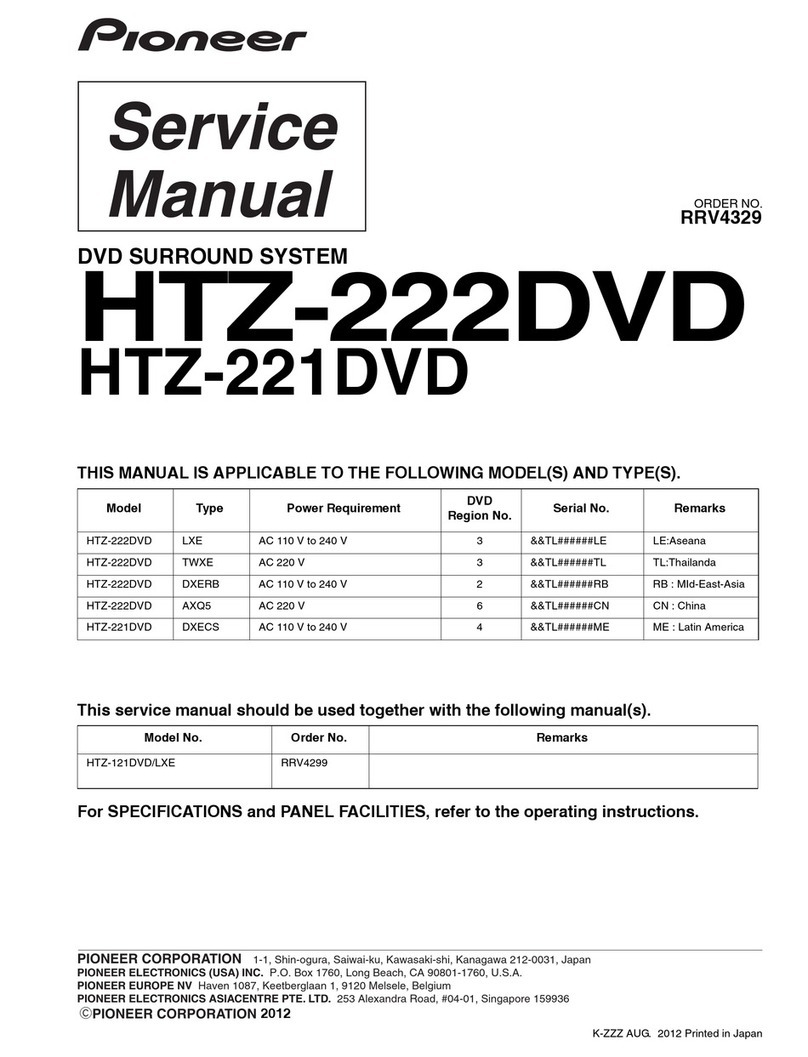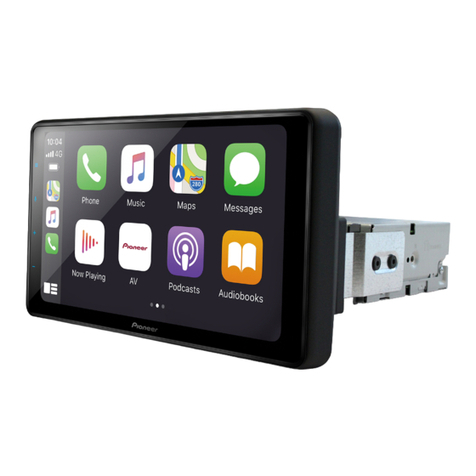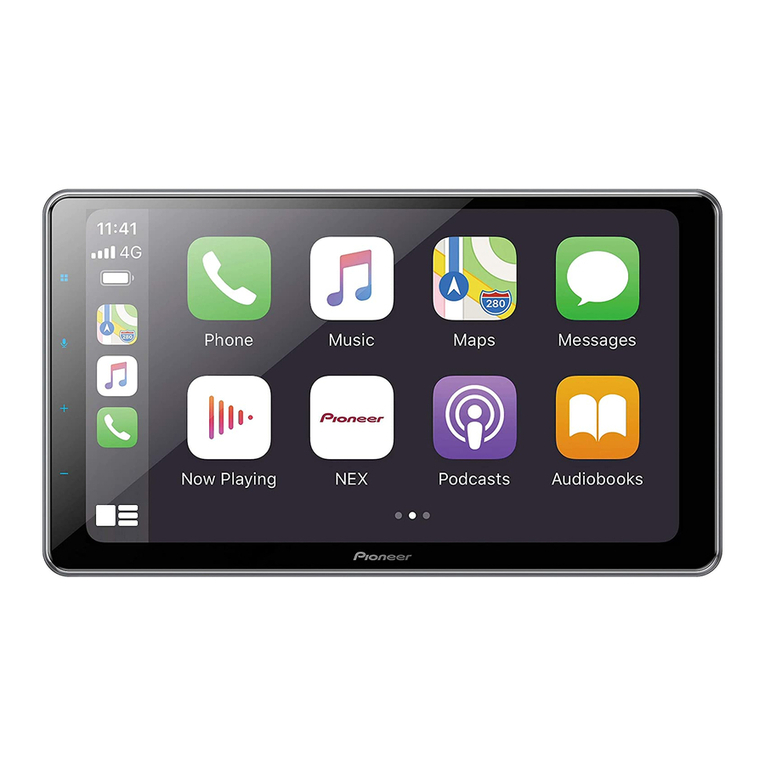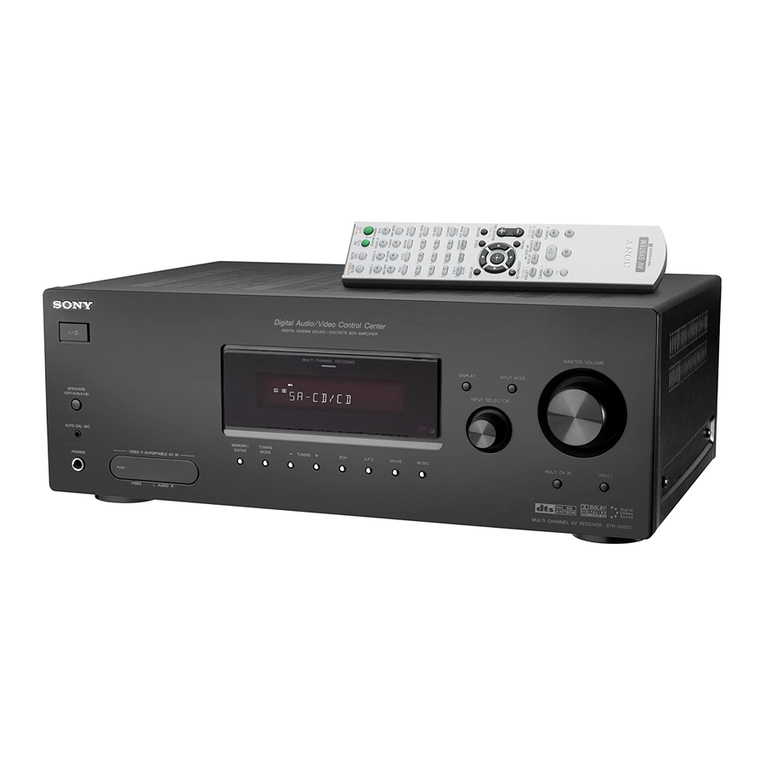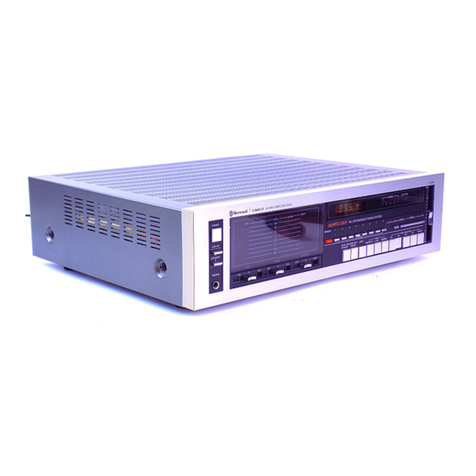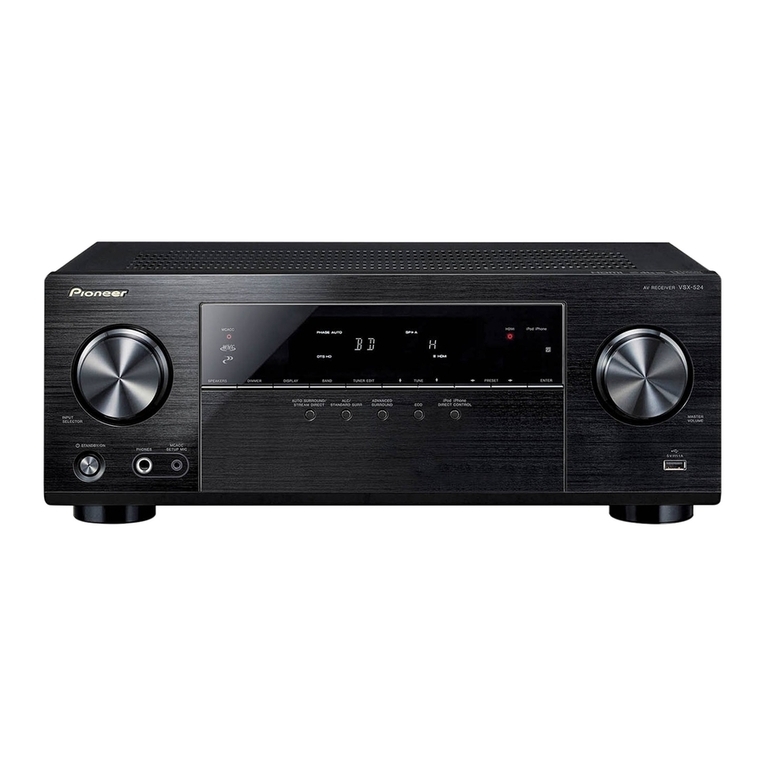o Limiting the Locking Range
If the quartzJock range is too wide, it will
overlap with strong adjacent broadcasting fre-
quencies and result in considerable tuning diffi-
culties. A DC amplifier is therefore used as a
limiter (limiter action by NFB circuit zenerdiodes)
which restricts the voltage applied to the variable
capacitancediode, thereby limiting the quartz-lock
range.
A DC voltage appears at pin no.13 of the IF
system IC (PA3007-A) when the antenna input
ievel drops below 5pV, or when the tuned fre-
quency has been detuned by more than t100kHz.
This DC voltage (FM muting signal) is applied to
the gate of Q2 (FET) via a Schmitt circuit, result-
ing in the FET being turned on, and the quartz-
Iock circuit being turned off.
Multiplex Decoder
The recently developed multiplex decoder IC
(PA4006-A) combines MPX decoding with muting
functions in a single IC, thereby handling the
functions of the more conventional MPX IC
(PA1001 A) and AF MUTING IC (PA1002-A).
Distortion ratings and S/N ratio have been
further improved by incorporating a chopper type
MPX decoder. The chopper type switching circuit
(see Fig. 4-2) operates by switching the signal
either to ground or to the through circuit, thereby
eliminating the generation of unwanted noise or
distortion. Furthermore, since the PA4006--4 fea-
tures DC direct-coupled switching with the detec-
tor, there is no deterioration in separation at the
Iow frequency end.
Besides the decoder and muting circuits, the
PA4006-.4 also incorporates the pilot signalcancel-
ler, stereo auto selector, VCO killer circuit, MU'l
amplifier. and MUT control circuit.
Composite
signal
Inprt Output
JUIIUUUIJUIJU'
.}. I
switchins
,in"r'r
S/ --'I
nL
Fig.4-2 ChopperTypeSwitchingCircuit
4.2AMTUNER
SECTION
The AM tuner section consists of a 2-ganged
tuning capacitor plus an IC (HA1197) which con-
tains a 1-stageRF amplifier, converter, 2-stage
IF
amplifier, detector, and AGC circuit.
The AM STEREO OUT terminal on the rear
panel is for connecting to an AM stereo broadcast
decoder adaptor. The signal appearing at this ter-
minal is the converter output passed via a buffer
(emitter-follower) stage.
sx-39clo
4.3AUDIO
SECTION
PhonoEqualizer
Amplif
ier
Fig. 4-3 shows the basic configuration of the
circuit. An S-N ratio of 86dB (at 2.5mV input,
IHF-A) has been achieved by using a ultra-low-
noise PNP transistor (2SA978) at the first stage,
and reducing the signal source resistance and
equalizer element impedance. High voltage gain is
provided in the following stage by a bootstrap cir-
cuit. The output stage is a complementary sym-
metrical SEPP circuit. The high voltage utility
factor of the SEPP circuit provides a high maxi-
mum output voltage. Dynamic range of the
equalizer amplifier is therefore wide and overload
input level at 0.005% distortion is 300mV (rms at
lkHz).
tNHMrl
ToneControl
Fig. 4-4 shows the basic configuration of the
circuit. This circuit is an NFB type tone control
with IC(HA12017P).
Tonecontrol (BASS,
TREBLE) isaccomplished
by providing the tone amplifier NFB circuit with
a frequency selective characteristic. The capaci-
tance
of C7-C4 arechanged
by theTURNOVER
switches
(by addinganother capacitorsin parallel)
to provideselectionof the frequency.
The NFB circuit is changedto a flat frequency
characteristicwhen the TONE switchin the OFF
oosition.
Fig.
4-3 Phono
Equalizer
Amplif
ier
Tone
Control



